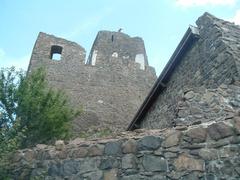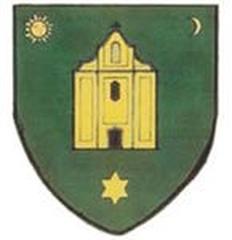Comprehensive Guide to Visiting Hollókő Village Museum, Sóshartyán, Hungary
Date: 17/08/2024
Introduction
Nestled in the breathtaking Cserhát Hills of Northern Hungary, the village of Hollókő stands as a living testament to the country’s rich cultural and historical heritage. Recognized as a UNESCO World Heritage Site since 1987, Hollókő offers visitors a unique glimpse into rural life before the agricultural revolution of the 20th century (UNESCO). Known for its well-preserved Palóc folk architecture, characterized by whitewashed houses, wooden porches, and steep roofs, the village provides an authentic experience of traditional Hungarian life (Wikipedia). This comprehensive guide aims to explore the history, cultural significance, and visitor information for Hollókő, ensuring an unforgettable journey into Hungary’s past.
Table of Contents
- Introduction
- History and Significance of Hollókő
- Ethnographic Significance
- Festivals and Cultural Events
- Visitor Information
- Gastronomy and Local Delicacies
- Visitor Experience and Feedback
- Accessibility and Accommodations
- FAQ
- Conclusion
- Sources
History and Significance of Hollókő
Origins and Early History
Hollókő, a village in Northern Hungary, is a living testament to rural life before the agricultural revolution of the 20th century. The village’s name, meaning “Raven-stone” in Hungarian, is derived from a local legend involving a castle lord, a kidnapped maiden, and ravens that carried away the stones of the castle to free her (UNESCO). The village’s history dates back to the 13th century when the Hollókő Castle was constructed in response to the Mongol invasion of the mid-1200s (Google Arts & Culture). The first written record of the village itself appears in the 14th century, mentioning the village church.
Architectural and Cultural Preservation
Hollókő is renowned for its well-preserved Palóc folk architecture, characterized by traditional wooden houses with whitewashed walls, wooden porches, and steep roofs. The village layout, including its buildings, farms, and orchards, has remained largely unchanged since the 18th and 19th centuries (Wikipedia). This preservation effort has earned Hollókő the status of a UNESCO World Heritage Site in 1987, making it Hungary’s only living example of a perfectly preserved settlement from the last century (UNESCO).
The Castle of Hollókő
Perched atop a hill overlooking the village, the ruins of Hollókő Castle offer panoramic views of the surrounding Cserhát hills. The castle played a significant role in the feudal wars of the Palóc and the Hussite and served as a protective fortress for the village (Europa Adventure). The castle’s strategic location and historical significance make it a key attraction for visitors, providing a glimpse into Hungary’s medieval past.
The Impact of Fires and Reconstruction
Hollókő has faced several catastrophic fires, the most recent occurring in 1909, which led to the village being razed and subsequently rebuilt. Despite these challenges, the village has managed to preserve its traditional architecture and way of life. The reconstruction efforts have ensured that Hollókő remains a living community rather than a static museum (A Small World).
Ethnographic Significance
Hollókő is a unique example of a deliberately preserved traditional settlement. The village’s 67 protected buildings, including peasant houses from the 17th to 19th centuries, showcase the typical rural life of the Palóc people. These buildings, with their stepped gable roofs and wooden verandas, are now home to handicraft workshops and exhibition houses, bringing the village to life during the tourist season (Book Your Tour).
Festivals and Cultural Events
Hollókő is known for its vibrant festivals and cultural events, which offer visitors a deeper immersion into the Palóc way of life. One of the most popular events is the Hollókő Easter Festival, held on the first weekend in April. This festival celebrates the old Hungarian tradition of Locsolkodás, where bachelors sprinkle water on girls dressed in colorful, petticoated dresses. The festival features folk bands, traditional Hungarian dancers, and various Easter-themed activities (A Small World).
Visitor Information
Visiting Hours and Tickets
Hollókő is open to visitors year-round. The Hollókő Castle and museums typically operate from 9 AM to 5 PM, but it’s advisable to check the official website for the most up-to-date visiting hours and ticket prices. During festival times, special events may extend opening hours (Hollókő Official).
Travel Tips and Nearby Attractions
Hollókő is easily accessible by car, with a 90-minute drive from Budapest through the beautiful Cserhát mountain range. For those preferring public transport, there are daily buses from Budapest to Hollókő. Nearby attractions include the Cserhát Nature Reserve and the charming town of Szécsény, known for its historic buildings and vibrant market (Budapest Local).
Gastronomy and Local Delicacies
Hollókő offers a unique gastronomic experience, especially during the tourist season. Visitors can enjoy traditional Hungarian dishes such as Langallo flatbreads, Retes (Hungarian strudels), Csoroge (deep-fried dough parcels), and Batyu (sweet ricotta pastries). The village also offers Parenyica smoked cheese and the rich Gulyás (Goulash) soup, flavored with paprika (A Small World).
Visitor Experience and Feedback
Despite its charm and historical significance, some visitors have expressed disappointment with the lack of cultural authenticity during their visits. Issues such as closed museums and limited interactions with traditional aspects of Hollókő have been raised. These concerns highlight the need for improved tour descriptions and enhanced cultural experiences to meet visitor expectations (Veronika’s Adventure).
Accessibility and Accommodations
Hollókő offers a variety of accommodation options, ranging from traditional guest houses that offer a glimpse into early 20th-century living to modern hotels like the Castellum Hotel Hollókő, which features contemporary amenities and stunning views of the old village (Budapest Local).
FAQ
Q: What are the opening hours for Hollókő Castle?
A: Hollókő Castle typically operates from 9 AM to 5 PM, but it’s advisable to check the official website for the most up-to-date visiting hours.
Q: How can I get to Hollókő from Budapest?
A: Hollókő is a 90-minute drive from Budapest through the beautiful Cserhát mountain range. There are also daily buses from Budapest to Hollókő.
Q: Are there any special events in Hollókő?
A: Yes, Hollókő is known for its vibrant festivals, including the Hollókő Easter Festival, which features traditional Hungarian music, dance, and various Easter-themed activities.
Conclusion
Hollókő stands as a remarkable example of rural heritage and traditional architecture, offering visitors a unique opportunity to step back in time and experience the Palóc way of life. Its historical significance, coupled with vibrant cultural events and traditional gastronomy, makes it a must-visit destination for those interested in Hungary’s rich cultural heritage. Plan your visit today and immerse yourself in the timeless charm of Hollókő.
For the latest updates and travel tips, check out our mobile app Audiala and follow us on social media.
References
- UNESCO World Heritage Centre. (n.d.). Hollókő
- Wikipedia. (n.d.). Hollókő
- Google Arts & Culture. (n.d.). Hollókő
- A Small World. (n.d.). Discover Old Village of Hollókő, Hungary
- Budapest Local. (n.d.). Travel Back in Time: Charming Village of Hollókő

